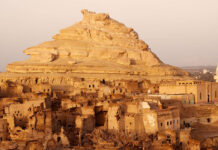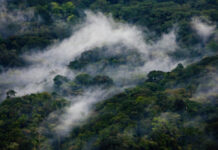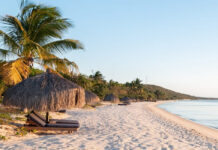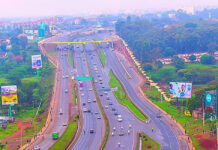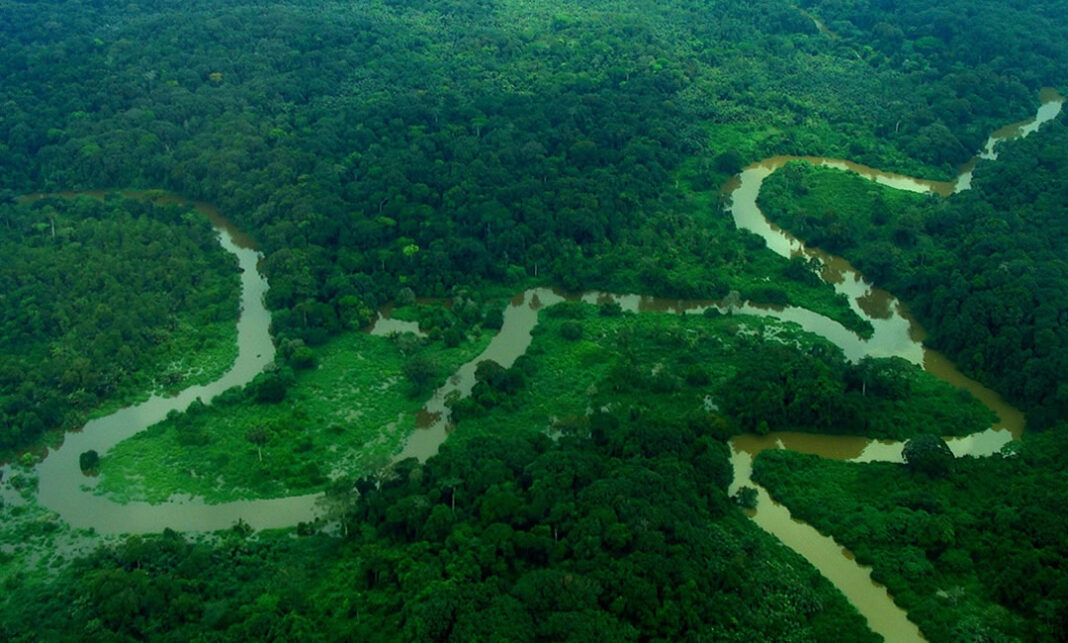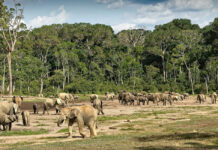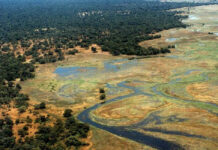Maiko National Park is Democratic Republic of Congo’s magnificent national park. Established in 1970s and covers an area of about 10885 square kilometers. It comes in parts which include province Orientale, Nord Kivu and Maniema. About 3 of DR Congo’s endangered species thrive within Maiko National Park which includes among others the endangered Eastern Lowland gorillas, the rare Okapi and the Congo peafowl (peacock).
This conservation area also refuges most of African forest elephants, the eastern chimpanzee, bongo, leopards and the endemic aquatic genet and it ranks as the second best alternative spot for you achieve your great dreams while on Democratic Republic of Congo safari holiday. However, this magnificent national park is one of the abandoned protected areas in Democratic Republic of Congo.
Its forest comes with immense carbon sink and its conservation is of international value when it comes to curbing the further effects of climate change. It is known for its lowland gorillas and offers the second alternative for tourists to sight the Eastern Lowland gorillas in DRC. In the entire world, there are nearly 5000 of these thriving in the wild and they are best spotted in the DR Congo.
The history of Maiko National Park
Maiko National Park started as Bakumu hunting reserve and this was established by the Belgian colonial administration purposely to preserve the land and its wildlife species mineral exploitation. When they were challenged around 1964, many of the Simba rebels found road less and inaccessible area as the best for them to live. Around 1970, president Mobutu set up the Maiko Conservation Area. However, most of the rebel groups still made their base around the corners of this park especially around the late 1990s and 2007.
The protected area was first surveyed in 1989 while more thorough surveys were carried out between 2005, 2006 and 2010. Despite its inaccessibility, attempts to offer humanitarian aid especially schools and health centers began in 2010 and in the following years more emphasis to ensure that there is access to the park will be come to pass.
When to visit Maiko National Park
The fact that the Democratic Republic of Congo lies along the Equator with a 3rd of the it lying to the North and two thirds to the South, its climate tends to be hot and humid around the River basin; cool and dry in the Southern highlands with a cold, alpine climate in the Rwenzori Mountains.
Maiko national park is all year round destination when it comes to safaris in the DRC offering the ideal spot for Eastern Lowland gorilla trekking. The Maiko forest predominates in the central and northern part of the park on raised Itombwe forest plateau.
Getting to Maiko National Park
Lying in the stunning jungle of Democratic Republic of Congo, Maiko National Park is best accessible using a four by four safari car. You can set off from Bafwasende route to small villages around the park. There are also other routes that can lead you up to Maiko National Park but they may all need a four by four safari jeep and overlanders may not help as such. There are several routes around Benin or Butembo, Goma or from Okapi Wildlife Reserve in the Democratic Republic of Congo.
For air travel; you can land in Bangoka International Airport (FKI) in Kisangani, Orientale province on scheduled or chattered flight. When you reach Kisangani, you can connect to Park by road. Kisangani is situated 515 kilometers Northwest of Maiko National Park. Kinshasa Airport to Bangoka International Airport, Kisangani is nearly 1 to 2 hours.
Lodges in Maiko National Park
For safaris in Maiko National Park, visitors mostly spend their nights by camping and this means that you have to come with your gear because there no safari lodges so far.
In conclusion, while planning your Congo safaris Maiko National Park should be a must to visit destination for breathtaking views of the lowland gorillas and other endemic wildlife species. Maiko National Park however, still needs to be rebuilt while its eco system also requires to be documented properly.
It gives visitors a second alternative to track the endangered Eastern lowland gorillas in the wild. Kahuzi Biega National Park is currently famous for lowland gorilla trekking harboring over 270 individuals.


